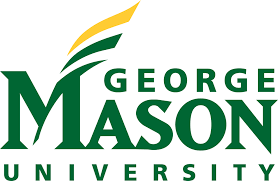George Mason University BOV adopts strategic direction; updates on workforce readiness, class modalities and science education
The five-year plan, titled “Mason Is All Together Different,” received BOV approval at the governing body’s Dec. 1 meeting. The plan identifies five broad priorities, with specific strategies and actions for each:
The Student Experience
Research, Scholarship, and Creative Activities
Partnerships for Economic and Social Impact
Diversity, Equity, and Inclusion
Faculty and Staff Success
You can read the plan here.
“The future of higher education belongs to those universities that can best adapt,” Mason President Gregory Washington says in the plan’s introduction. “The world we are entering will be fundamentally different than the one we are leaving. To adequately prepare future generations, society needs universities that are poised to be, as we say at Mason, ‘All Together Different.’”
The plan marks the culmination of a comprehensive year-plus process that included extensive outreach to a wide variety of stakeholders, including faculty, staff, students, alumni, donors and industry leaders through a series of interviews, focus groups, town hall meetings and a survey that drew more than 2,000 responses. As Washington says, “Everyone and anyone should see themselves reflected in this plan.”
Ken Walsh, chief of staff and vice president for strategic initiatives, headed the strategic planning process and formulated a series of ways to measure strides made toward achieving the objectives.
“The roadmap takes lofty goals presented in the strategic plan and brings them down to detailed action steps, performance indicators and progress metrics so we can see direct progress over the next five years,” Walsh said.
Other items from the BOV meeting:
Andre Marshall, vice president for research, innovation, and economic impact, provided an update on the Tech Talent Investment Program in which the state invested $235 million in Mason to increase the number of bachelor’s and master’s degree graduates in computing over the next 20 years. Marshall reported that Mason is far exceeding the graduation targets for BS recipients and narrowly meeting its MS targets. Because the target numbers become more aggressive over time, meeting the MS targets is a challenge that Mason is addressing.
College of Science Dean Fernando Miralles-Wilhelm presented an overview of his college. One point he emphasized: 62% of undergraduates in the College of Science are female, a percentage two times or more than at some peer universities. In addition, 51% of graduate students in the College of Science are female.
Provost Mark Ginsberg’s report included the percentages of undergraduate face-to-face (70%), online (26%) and hybrid (4%) classes for the spring 2023 semester. For graduate courses, the percentages are 75% face-to-face, 21% online and 4% hybrid. Ginsberg said this is the third consecutive semester with a similar pattern.

